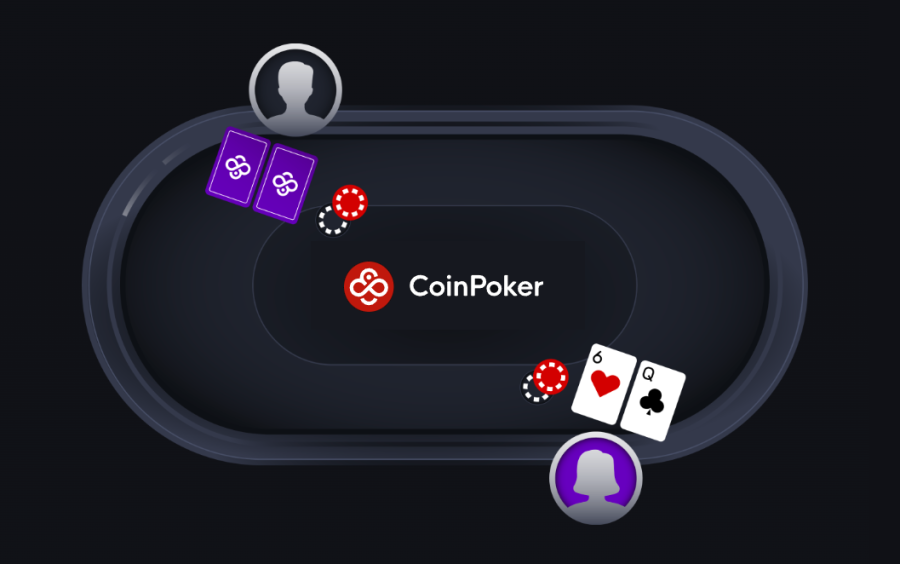What was once a niche work lifestyle has become commonplace. Millions of Americans now work remotely – and millions more are ready to join in. While remote working offers many benefits, it also has its own distinct challenges that must be worked through. Understanding how to power through friction and optimize productivity for better output is the goal. Here are six brilliant brain hacks for the remote worker.
Do you know where to start? Here is a practical guide to on-boarding remote engineers from a topmost expert. Consider these 6 brilliant brain hacks for the remote worker.
The Upward Climb on Remote Working
If you work from home, you used to be the anomaly. Today, you’re in good company. Pretty soon, you’ll be part of the majority.
According to Global Workplace Analytics and Quarterly Global, the leader in PR, marketing and advertising, the number of individuals working from home has grown by 173 percent since 2005.
Overall, 4.7 million employees (roughly 3.4 percent of the overall workforce) work from home at least half the time.
Approximately 40 percent of American employers offer more flexible workplace options today than they did five years ago. But with 80 to 90 percent of the U.S. workforce saying they’d prefer to work outside the office at least some of the time, this number is expected to rise in the coming years.
As remote working becomes more commonplace, so will the need for better remote working strategies.
The Top Remote Working Challenges
Remote working is highly appealing and advantageous for freelancers, employees, and employers alike. But it’s not a perfect setup. There are plenty of challenges, including:
Blurred lines
Everyone wants to talk about tearing barriers between work and personal life, but too much overlap can equally problematic. One of the keys to maintaining optimal work-life balance is being able to separate the two. When you work out of the house, it’s challenging to carve out a meaningful division between each area. This can make you less effective in both aspects of your life.
Distractions
Have you ever tried to work from home when you have a house full of rambunctious children? Or what about participating in a conference call in the middle of a loud coffee shop? Wherever you’re working, distractions abound.
Procrastination
Whether you’re an employee or freelancer, your remote working status typically comes with greater freedom in how you manage your time. If you aren’t careful, procrastination can get the best of you. Over time, it may even become habitual.
Inconsistency
When working in an office, there’s something to be said for the predictability. You basically know what to expect. Your desk is in the same place, you see the same people, and you go through the same basic routines. Remote workers rarely have the luxury of consistency. This makes it hard to get in a state of flow.
Communication
We may have more communication methods than ever before, but there’s still nothing that can fully replicate being face-to-face in the same physical space. For remote workers, trying to communicate via a combination of phone, email, SMS, and video chat creates an extra layer of friction.
Isolation
Finally, remote working often gives rise to feelings of isolation – particularly in people with extroverted personalities. This can lead to boredom, pessimism, and a lack of drive. It can even have serious side effects, like anxiety or depression.
Most people ignore these challenges, and the results show. But if you’re someone who wants to increase productivity and maximize output, you need a better strategy.
And once you discover what works, you need to bottle it up and use it to your advantage.
Powerful Brain Hacks for Better Results
Brain hacking.
It sounds like a buzzword – and it kind of is. But that doesn’t make it any less valid.
Our brains are constantly being shaped by events, experiences, external stimuli, and other environmental factors. And as weird as it may sound, the human brain is subject to regular physical and cognitive changes.
The neuroplasticity concept says that the brain, like muscles in the body, becomes weaker or stronger over time. It’s continuously changing and rewiring. Over time, targeted techniques and purposeful strategies can morph into automatic habits and processes.
These targeted techniques and strategies are brain hacking. And it’s something that every remote worker can do to overcome the aforementioned challenges and optimize productivity and output.
Here are some brain hacks you may find helpful:
-
Try Intermittent Fasting for Better Focus
Intermittent fasting is a biohacking concept that involves alternating cycles of fasting and eating. There are various techniques, but the most common is to eat all of your meals in one eight-hour window. In other words, you’re fasting for 16 hours every day.
If you’re someone who loves food, this probably sounds impossible.
However, it’s not nearly as difficult as it initially seems.
It basically means you eat your first meal at 11 a.m. and your last meal at 7 p.m. (or whatever variation works for you).
Aside from the fat loss and metabolism benefits, intermittent fasting actually helps with focus. The consolidated intake of food prevents wasted energy from digesting food. Instead, you’re able to allocate those energy reserves to concentrate on work-related tasks.
On a related note, be mindful of what you eat.
While health professionals have spent years telling people to avoid fat, the truth is that you need healthy fats to maximize cognitive functioning.
Why?
It’s pretty simple: The human brain is 60 percent fat.
When you eat, try incorporating items like eggs, avocados, nuts, salmon, trout, and coconut oil into your meals.
-
Eliminate Digital Media from Your Morning Routine
Bing! Bing! Bing!
Your morning alarm goes off.
You slap the snooze button. Once. Twice. Three times.
Once you finally come to your senses, you grab your phone, pull up Instagram, and start scrolling.
Then you get out of bed, walk downstairs, and turn on the news.
While watching the news, you reply to a couple of late-night texts that came in while you were sleeping.
Over breakfast, you check your email.
It’s not even 8 a.m., and you’ve consumed more digital media than your brain can process. You’ve also unintentionally heightened your stress level, stifled your creativity, and destroyed your focus.
When you start your day with digital media, you’re actually beginning your morning playing catch-up on what happened yesterday. You’re also letting other people dictate how you feel. You haven’t even started working, and stress, worry, and discontentment become the resounding feelings of the day.
Try taking a digital fast for the first two to three hours each day.
In a study conducted by a team of researchers at the University of British Columbia, 124 individuals were asked to check their email frequently for one week. The next week, they were told only to check their email three times per day (and to disable all notifications).
The data was analyzed against the time spent viewing email, and participants reported feeling significantly lower stress levels and higher feelings of positivity when email exposure was limited.
Once you cut back on exposure to email, social media, news, and other digital media forms, you’ll start to feel the positive effects.
While everyone can benefit from less digital media exposure, it’s especially helpful for remote workers close to digital distractions like the TV, video game systems, and personal smart devices.
-
Leverage the Pomodoro Technique for Better Scheduling
Americans have a love affair with multitasking. We wear our ability to juggle responsibilities like a badge of honor.
But research shows that multitasking actually suppresses productivity. And if you work from home, where personal distractions are omnipresent, it can severely limit your output.
Enter the Pomodoro Technique – a revolutionary brain hacking method that remote workers have been using for years to increase focus and productivity.
The Pomodoro Technique consists of breaking your workday into 25-minute sections of work separated by five-minute breaks. Each one of these half-hour chunks is referred to as a Pomodoro. Once you’ve completed four Pomodoros, you take an extended break of 15 to 20 minutes.
These 15- to 20-minute breaks can be used for remote workers to do tasks around the house – such as folding laundry, fixing lunch, or taking a shower. This allows you to be productive with work while also taking full advantage of the fact that you’re home.
-
Use Parkinson’s Law to Avoid Procrastination
In a satirical piece written for the Economist in 1955, British naval historian Cyril Parkinson made the following statement:
“Work expands to fill the time available for its completion.”
He would later write a book that fleshed out this idea. Eventually, people would refer to this concept as Parkinson’s Law.
In a remote work setting, Parkinson’s Law states that the time it takes to complete a work project depends on how much time you allot for it. In other words, if you give yourself eight hours, you’ll slow down and make it take eight hours. If, however, you only give yourself five yours, you’ll block out distractions and get it done in five hours.
If you’ve grown weary of procrastination and hope to finish your work faster and more efficiently, you need to set tighter deadlines.
Instead of telling a client, you’ll have the project done by next Friday, tell them you’ll have it in by next Tuesday. By tightening the time constraints, you force yourself to work more efficiently.
-
Optimize Your Home Office for Productivity
One of the major challenges of working from home is that you’re forced to create a professional workspace in the middle of a very personal place.
But this is also one of the distinct advantages.
You have the capacity to design your own workspace – so why not optimize your at-home workspace in a way that puts your brain in the right frame of mind to be productive?
For starters, choose a room in the house that’s as far away from communal living areas as possible. In other words, being located right off the living room isn’t ideal. You’re much better off positioning a home office in the back corner of the house.
Secondly, you need natural light. It plays a catalytic role in brain performance, creativity, and focus.
Thirdly, paint your office walls a soothing color. The principles of color psychology suggest cool greens, blues, or neutrals. Avoid colors like red and orange, which provoke feelings of urgency.
Finally, eliminate distractions by avoiding clutter. While some creative minds thrive in messy environments, the vast majority of people wilt. Clutter zaps up energy and makes it hard to focus on the task at hand. By adopting a minimalist environment, you can get more done with less effort.
-
Keep a Schedule
The human brain thrives on predictability. Remote working is far less predictable than working in an office where you’re expected to show up, take lunch, and go home at the same time each day.
If you want to give your brain a solid framework to latch onto, a consistent schedule is necessary.
Start your day by having your alarm go off at the same time every single morning.
After waking, implement a consistent routine that helps you transition from personal duties to professional responsibilities.
Start working each day simultaneously and use a couple of familiar tasks to help your brain slip into the right frame of mind.
Taking lunch at the same time is also advisable – particularly if you’re leveraging intermittent fasting.
The hardest part for most remote workers is “clocking out” at a consistent time. It’s easy to continue working and filling time until late in the evening. To prevent this from happening, try scheduling obligations in the evening. This makes it less likely that you’ll keep working.
Setting Yourself Up for Success
Not all of these brain hacks and strategies will appeal to you. It’s all about finding your best approach and leveraging whatever it is that helps you achieve a state of flow.
What works for you?
How can you set yourself up for max productivity?
Your approach will differ from the next person’s – so don’t try to mimic or replicate what others are doing. Instead, become like a scientist in the laboratory. Mix, match, and blend proprietary formulas until you discover a brain hacking system that puts you on a path for success.
Image Credit: David Cassolato; Pexels
Try Out Productivity Tools We Are Using
Monday.com | Best Productivity and Management Tool | on Monday.com | |
Calendar.com | Best Calendar and Scheduling Tool | on Calendar.com | |
Later.com | Best Social Media Scheduling Tool | on Later.com | |
Todoist.com | Best Time Management Tool | on Todoist.com | |
Toggl.com | Best Value Tool | on Toggl.com | |
Trello.com | Best Overall Tool | on Trello.com |











